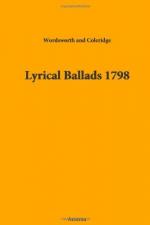|
This section contains 3,713 words (approx. 13 pages at 300 words per page) |

|
SOURCE: Murray, Roger N. “Paradox and Equivocation.” In Wordsworth's Style: Figures and Themes in the “Lyrical Ballads” of 1800, pp. 11-24. Lincoln: University of Nebraska Press, 1967.
In the following excerpt, Murray explores Wordsworth's use of illusory imagery in the Lyrical Ballads of 1800, emphasizing that the poet employs this technique to make a connection between the real and supernatural realms.
Every student of the English Romantic poets knows that Wordsworth's task in the Lyrical Ballads was “to give the charm of novelty to things of every day,” as Coleridge puts it,1 and he also knows of Wordsworth's predilection for exact description.2 Cleanth Brooks is one of the few critics since Coleridge who have explored in any detail, however, the matter of how Wordsworth pressed beyond the descriptive exactitude he cherished and attained a novelty that precise description alone cannot be depended on to supply.3 Because of the gentleness with which...
|
This section contains 3,713 words (approx. 13 pages at 300 words per page) |

|


